 Winter 2019Having trouble viewing this email? View it as a Web page.In this issue:
| ||||||||||||||||||||
“Required, not preferred” – the need for partnerships in conservationBrian Branciforte
Recently at a conference a state agency representative was giving a presentation about private lands conservation programs. The audience seemed more interested in the next snack break rather than the materials on the 12-slide bulleted PowerPoint. The next speaker got up and moved slowly toward the podium. He looked under-dressed, nervous, and a little out of his element. The speaker was a private landowner enrolled in one of the previously mentioned programs. There were no slides or prepared speech. He simply spoke from the heart about his passion for his way of life, the land, and his ethics toward conservation. The audience was charmed and captivated. This exemplifies one of the benefits of a partnership-based approach. Different partners bring different perspectives toward a similar goal.
What is the status of the 2018 State Wildlife Action Plan?Allie McCue
Coming Soon: A Regional Species of Greatest Conservation Need List for the SoutheastAndrea Alden and Elizabeth Crisfield
A Regional Species of Greatest Conservation Need list has proven to be a powerful tool for enhancing cross-state collaboration and successful conservation of wildlife species in the northeastern United States over the last 20 years. Southeastern states are now following suit, with development of their own RSGCN list.
One small boy and his love for turtles wins heartsSandy Mickey
In late November, I posted a simple request on Twitter that changed the world for our son, Jack. He is a 5-year-old with a rare spine condition who wears a permanent plaster cast around his body to help train his spine to grow straight. He was set for surgery #22 for a new cast at the Shriners Hospital for Children in Greenville, S.C. It’s a normal part of our lives, and other than not being able to take baths or go to the pool, he is a normal child. But the two to three hours after each surgery, as Jack comes out of anesthesia, are the exception. He is fussy and restless. We try each time to distract him, so the doctors and nurses can finish up their care. Jack loves turtles. I asked my followers if they could tweet turtle pics from the field and address them to Jack. That just might distract him for a bit.
Introducing the Florida Conservation Planning AtlasSarah Sharkey
Documenting Presence of the Coastal Dunes Crowned SnakeAnna Deyle
Impacts of a Hurricane Through a Biologist’s EyesThomas Kuhn
Hurricane Michael struck the Florida panhandle in October 2018 as a Category 4 storm in a swath stretching from Panama City Beach to the Big Bend on the coast and up through the state’s rural interior, exiting into Georgia as a Category 3 storm. FWC staff living in the impacted area have been working to assess the impacts to Florida’s wildlife and their habitats, while working to restore our own homes. In the days soon after the storm, I drove to see examples of several different ecosystems to view them and begin trying to understand the impacts of the storm. These are my observations, made from my perspective as both a regional and freshwater biologist.
Wetlands
The forests and ephemeral wetlands of St. Marks National Wildlife Refuge, located in Wakulla, Jefferson and Taylor counties, were largely spared from the wind damage seen further west. But they were subject to storm surge that inundated freshwater ponds, leaving them with saltwater and salt concentrations orders of magnitude greater than usual, just before the beginning of the breeding season for multiple species of sensitive fall and winter breeding amphibians. Standing by the ponds you could smell the salt in the air far from where you would expect a sea breeze. Prior to my arrival with staff members from the FWC’s Species Conservation Planning and Aquatic Habitat and Restoration Enhancement sections, staff at St. Marks had removed multiple tussocks of vegetation that had been lifted out of nearby ponds and deposited on park roads by the rising and receding storm waters. Much of this vegetation had been of an invasive marsh grass species, so that was a rare immediately positive impact of the storm.
Closing thoughts
The ecosystems of Florida are disturbance-dependent systems. Fire is the dominant historical disturbance and is consequently a major component of our management strategies. But hurricanes and tropical storms also provide elements that are important to our habitats. We find ourselves with rivers full of woody debris, which provides homes and food for aquatic insects and other invertebrates that are in turn consumed by fish, which shelter in the debris as well. Flooded forests provide access to nutrients and spaces that riverine species use for foraging and spawning. Forests with decreased canopy densities may in time lead to the return of ground cover that previously didn’t receive enough light to thrive. Open pine savannahs provide prime habitat for species such as gopher tortoises, eastern indigo snakes and more. Beaches and dunes are dynamic systems by their very nature, shifting with wind and wave. Without those elements, they would be overgrown and shift into habitats not suitable for shorebirds, beach mice and sea turtles.
With time the immediate negative impacts of the storm to our wildlife and their habitats, and to our ability to view and enjoy them, will fade to long-term benefits enjoyable by all.
Immediately after the storm, the FWC made it clear the health and safety of the people who lived in the area were its number one priority. As the area recovers, the FWC is still involved and will be involved in the recovery for many months to come. The trauma experienced by the people who live here was difficult, but they are as resilient as our wildlife and habitats.
Crossing the finish line! Highlights from several completed State Wildlife Grant projects
We don't always take enough time to celebrate hard work and amazing accomplishments. Florida’s Wildlife Legacy Initiative is recognizing a few of the following principal investigators who finished their State Wildlife Grant-funded projects recently. These projects demonstrate the wide variety of conservation efforts taking place in Florida – from research and on-the-ground restoration to management, mapping and monitoring. For more information on the following projects, please contact Andrea.Alden@MyFWC.com or Robyn.McDole@MyFWC.com
Congratulations to all on work well done!
Statewide Survey and Nest-site Selection Patterns of Reddish Egrets
Principal Investigator: Andrew Cox, Florida Fish and Wildlife Conservation Commission
A statewide survey of nesting reddish egrets funded in 2014 was done by FWC researchers to provide a baseline population size for population monitoring and to identify the largest breeding colonies in Florida to help prioritize future management activities.
| ||||||||||||||||||||
Prescribed Fire and Fuel Reduction for Ecological Maintenance and the Restoration of Mesic Pine Flatwoods on Okaloacoochee Slough State Forest
Principal Investigators: Chris Schmiege and Melinda Avni, Florida Forest Service
This project’s goal was restoring the mesic pine flatwoods habitat at Okaloacoochee Slough State Forest by conducting mechanical fuel reduction treatments and prescribed burns. The mesic pine flatwoods of OSSF in Hendry County and a portion of Collier County provide habitat for 27 of Florida’s Species of Greatest Conservation Need, including the eastern indigo snake, Florida black bear, Florida panther, swallow-tailed kite and gopher tortoise. Fire regimes at OSSF had been altered by years of fire exclusion, suppression and other human activities. This project allowed Florida Forest Service staff to work towards reintroducing a natural fire interval to the OSSF’s mesic pine flatwoods.
Impacts of Sedimentation on Herbivory and the Control of Algal Communities and Coral Health on Florida Coral Reefs
Principal Investigator: Deron Burkepile, Florida International University
The study’s purpose was describing in depth the different kinds of algal turf communities on Florida’s coral reefs, determining how those communities are related to the amount of sedimentation, and figuring out how sedimentation and algal cover influences fish herbivory and the settlement of coral larvae.
Algal turf communities are typically thought to indicate healthy coral reef sites, because they are maintained by herbivorous fishes which create open spaces for the coral larvae to settle on and grow through their grazing behavior. However, these algal turf communities may not always be a good sign. When sediment is trapped by this turf, it can reduce grazing rates of herbivorous fishes and decrease settlement rates of larval corals, with both results demonstrated by this study. This was found to be the case especially in less structurally complex sites, suggesting a negative feedback loop may be occurring.
In other words, sedimentation was causing already degraded reef sites to become even more degraded and preventing the reefs from recovering in a kind of snowball effect. This raises questions, such as the sources of the sediment and the management options available to reduce the amount of sediment. Indeed, the answers to these questions may prove critical to the conservation of Florida’s coral reefs and the Species of Greatest Conservation Need that depend on the reefs to survive.
This project contributed to the 2012-2018 Marine Habitat Implementation Goal of Florida’s Wildlife Legacy Initiative: To improve coral reef restoration and conserve marine SGCN through planning and research.
Below: Juvenile corals found during this study were often in competition with other organisms for space on the reef.
Landscape-level In-stream Habitat Mapping: "Side Scan Sonar"
Principal Investigator: Jennifer Bock, Florida Fish and Wildlife Conservation Commission
Fish and other aquatic organisms utilize a variety of habitats for spawning, foraging and other activities. These critical habitats can include woody debris, rock, gravel and sandy substrates. A challenge for conservation managers is determining where these habitats are located within a river or stream. Researchers with the FWC’s Florida Wildlife Research Institute were funded in part by the State Wildlife Grant program to map underwater habitat features in an efficient, low-cost manner. They utilized a technology called “side scan sonar” to create digital images of river and stream bottoms throughout navigable portions of the watersheds of the Lower Choctawhatchee, Lower Ochlocknee, Withlacoochee, Peace, and Lower Suwannee rivers. These images were used to identify habitat types and generate habitat maps. These maps can be used by habitat managers and other researchers for habitat monitoring and restoration.
Below: An example of the data collected during the project. On the left, side scan sonar output. The upper right, substrate lifted from the stream bottom, and the lower right, substrate classifications and other sample data
 Seagrass Mapping in Florida's Big Bend Region
Principal Investigator: Laura Yarbro, Florida Fish and Wildlife Conservation Commission
The Seagrass Integrated Mapping and Monitoring program, coordinated by the Florida Fish and Wildlife Conservation Commission (FWC,) has collated the most recent seagrass mapping and monitoring data to provide information on the status of seagrass, trends and management needs in Florida.
Buy a Conservation License Plate & Show Your Support for Florida's Wildlife!
For more information about the following six conservation license plates, please visit the BuyAPlate Program website. The BuyAPlate Program is managed for the FWC by the Fish and Wildlife Foundation of Florida.
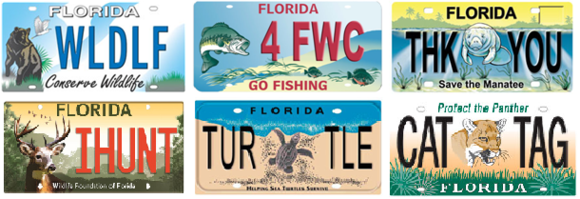 Top Row, Left to Right: Conserve Wildlife (FWC), Go Fishing (FWC), Save the Manatee (FWC); Bottom Row, Left to Right: Hunting Conservation (Fish and Wildlife Foundation of Florida), Helping Sea Turtles Survive (FWC & the Sea Turtle Conservancy) & Protect the Panther (FWC)
The mission of Florida's Wildlife Legacy Initiative:
Use the State Wildlife Action Plan and State Wildlife Grant funds to leverage resources with partners to sustain Florida's legacy of native wildlife and their habitats.
For more information, please visit our Web page: http://myfwc.com/conservation/
To receive FWLI’s Newsletters, grant announcements, and State Wildlife Action Plan Revision updates, please sign up on our Web page!
|
http://live.oysterradio.com/






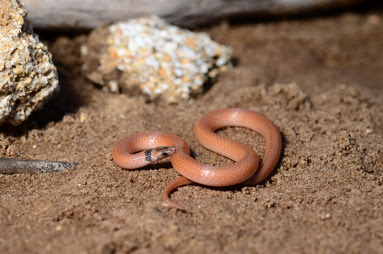
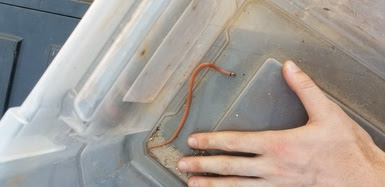


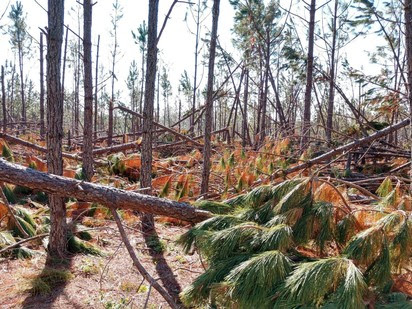


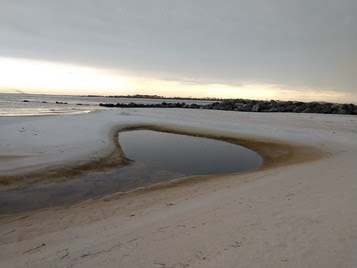











No comments:
Post a Comment